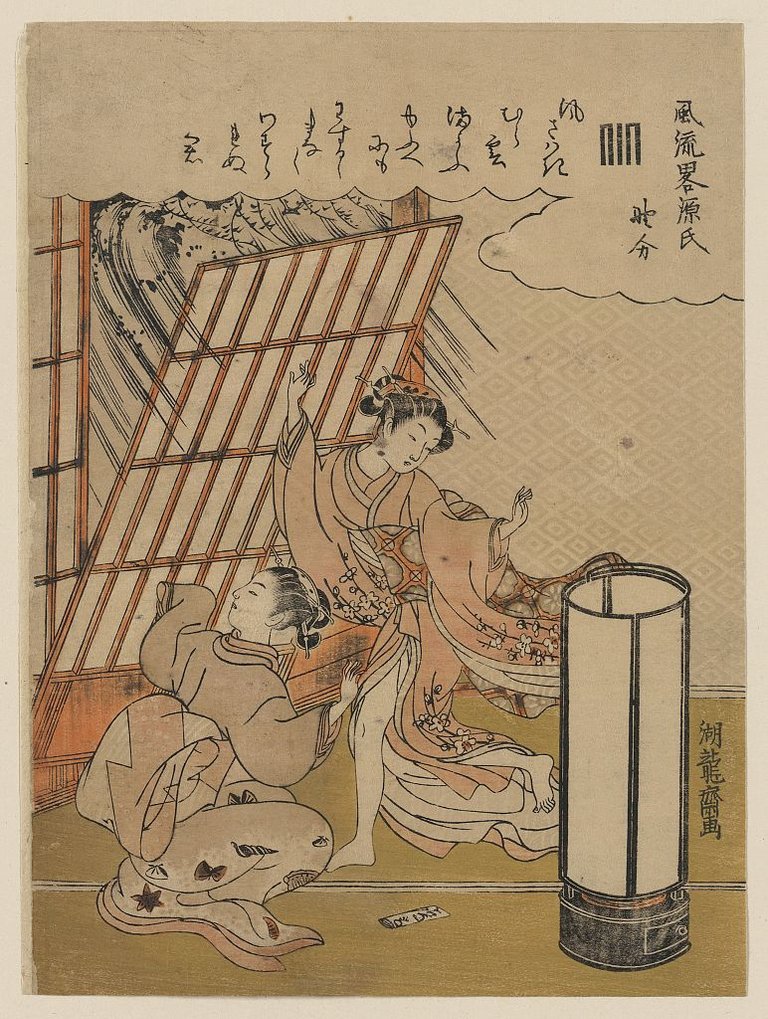Autumn is the time for typhoon in Japan...
tsuma mo ko mo tera de mono kū nowaki kana
eating at the temple...
autumn typhoon
—Buson


Even today some temples still function as evacuation buildings. You can imagine how this might have been even more so back in the day, as they were fairly important buildings, well built, and everyone knew them, making them ideal locations for emergencies.
The word used here, nowaki, is emphasizing the typhoon wind and not the rain. "Field-dividing wind" may be a better translation, as the word gives an image of rice fields damaged by the strong wind. This is unfortunately not an uncommon occurrence. Often after a typhoon passes I can walk to the rice fields and see portions of the rice patties damaged or even completely destroyed.
I added "autumn" before typhoon in my translation just to put this in the proper season for any unfamiliar with these storms. Autumn is typhoon season in Japan, with always at least a few hitting, often at least one of which will be fairly big and might cause some damage somewhere on the main island (Honshu).
As always with his haiku, Buson is painting us a picture with his words. More than any other classic haiku poet, Buson was very visual in his words. His main job was as an artist, which may be why he leaned towards this style of haiku.
❦

 |
David LaSpina is an American photographer and translator lost in Japan, trying to capture the beauty of this country one photo at a time and searching for the perfect haiku. He blogs here and at laspina.org. Write him on Twitter or Mastodon. |
That is, me! If you like this translation, feel free to use it. Just credit me. Also link here if you can. ↩